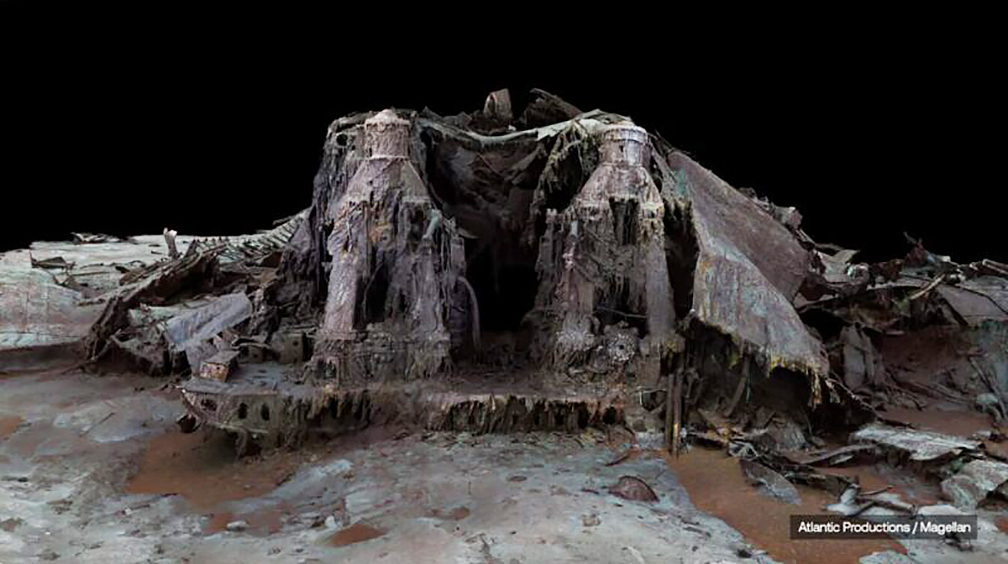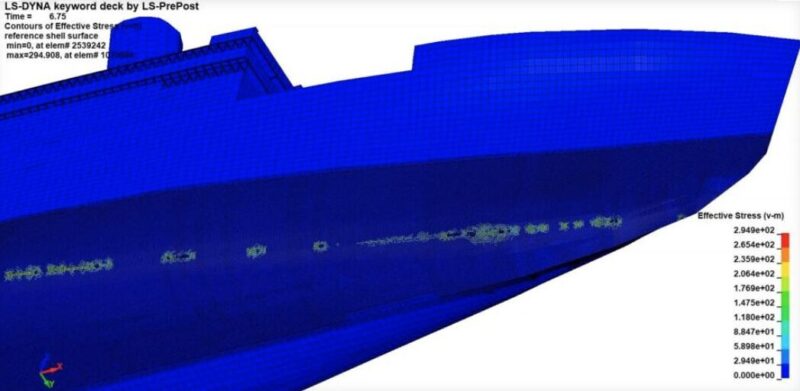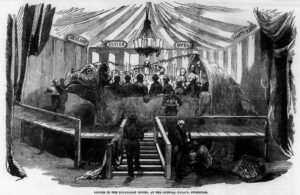Over a century after the Titanic sank, ground-breaking 3D scans have unveiled new insights into the ship’s final moments. Using over 700,000 images, researchers have created a digital twin of the famous wreck.
Because it lies 3,800m down on the floor of the Atlantic, the only practical way to study the wreck is with underwater robots. Until now, this has meant researchers can only see a small section of the ship at a time. The new 3D replica shows the ship in full.
“It’s like a crime scene,” Titanic analyst Parks Stephenson told the BBC. “You need to see what the evidence is, in the context of where it is. And having a comprehensive view of the entirety of the wreck site is key to understanding what happened here.”
The two sections of the ship lie 600m apart, and there are stark differences. While the bow of the ship rests upright on the seafloor with relatively little damage, the stern is a crumpled piece of metal. Researchers think most of the damage occurred as it crashed into the sea floor.

The stern of the Titanic. Photo: Atlantic Productions/Magellan
A glancing blow
Combining the 3D scans with computer modeling, the team created a simulation of the collision with the iceberg. Rather than a huge, powerful collision, researchers suggest that the ship only made “a glancing blow against the iceberg.” So instead of a huge gaping hole, the collision created a series of small, A4-sized punctures across one side of the hull.
Famously touted as unsinkable, the Titanic was designed to stay afloat even if four of its watertight compartments filled with water. The problem is that the small punctures stretched across six compartments.
“Those small holes are across a long length of the ship, so the flood water comes slowly but surely into all of those holes, and then eventually the compartments are flooded over the top, and the Titanic sinks,” explained naval architect Simon Benson.

A simulation shows the iceberg created a line of small holes along the hull. Image: Jeom Kee-Paik/University College London
Brave engineers
The scans also shed light on the bravery of the ship’s crew. Images reveal that steam was still moving through the boilers and generating electricity as the ship sank. This supports eyewitness accounts that Joseph Bell and a team of engineers remained at their posts in the boiler rooms. Their actions likely saved hundreds of lives.
“They kept the lights and the power working to the end to give the crew time to launch the lifeboats safely with some light instead of in absolute darkness,” said Stephenson.
Another revelation concerns First Officer William Murdoch. In James Cameron’s 1997 film, he is shown shooting a passenger and then himself. New evidence from the scans indicates that this is completely untrue. A lifeboat davit at his evacuation station was found in the upright position, suggesting he was preparing to launch another lifeboat. This supports testimonies from Second Officer Charles Lightoller and other survivors that he was swept away while helping others.
The state-of-the-art 3D scan has been produced for the new National Geographic documentary Titanic: The Digital Resurrection.





